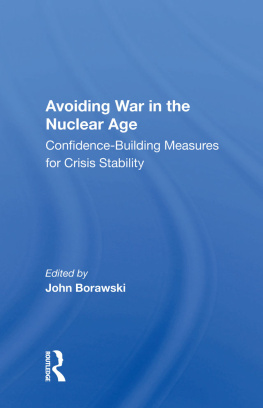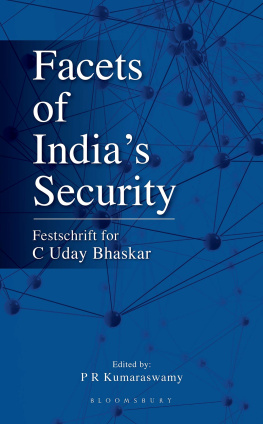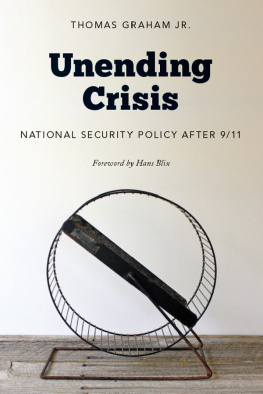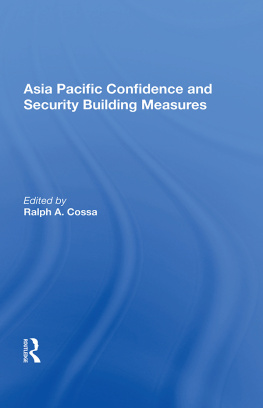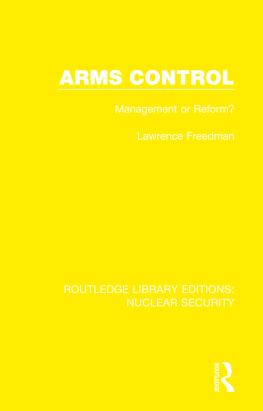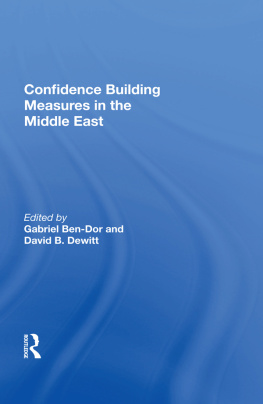Avoiding War in the Nuclear Age
About the Book and Editor
Given the disappointing history of arms control negotiations and agreements, disconcerting trends in the balance of power, and emerging technologies that challenge conventional assumptions about deterrence, new ways to promote security through negotiations must be identified and utilized if arms control is ever to play an integral role in enhancing deterrence and reducing instabilities. Confidence-building measures (CBMs) may offer one way out of the contemporary arms control morass. Instead of focusing on limiting the number and types of weaponry, CBMs are designed to control how, when, where, and why military activities occur. By clarifying military intentions and regulating the operations of military forces in times of both crisis and calm, CBMs can help diminish the opportunities for war arising from surprise attack or from miscalculation, accident, or failure of communication. This volume assembles leading CBM experts from government and academia to assess the utility of CBMs in a wide variety of areas. It is intended to serve as a basic primer on the subject, as well as to contribute to the ongoing national debate over the role of arms control in strengthening national security by analyzing new and fruitful avenues toward that over-riding objective.
John Borawski is a research associate at the Woodrow Wilson International Center for Scholars, Washington, D.C., with the International Security Studies Program.
For Charlotte E. Thompson, CBM extraordinaire
Avoiding War in the Nuclear Age
Confidence-Building Measures for Crisis Stability
Edited by John Borawski
Foreword by
The Honorable James E. Goodby
First published 1986 by Westview Press, Inc.
Published 2018 by Routledge
52 Vanderbilt Avenue, New York, NY 10017
2 Park Square, Milton Park, Abingdon, Oxon OX14 4RN
Routledge is an imprint of the Taylor & Francis Group, an informa business
Copyright 1986 Taylor & Francis
All rights reserved. No part of this book may be reprinted or reproduced or utilised in any form or by any electronic, mechanical, or other means, now known or hereafter invented, including photocopying and recording, or in any information storage or retrieval system, without permission in writing from the publishers.
Notice:
Product or corporate names may be trademarks or registered trademarks, and are used only for identification and explanation without intent to infringe.
Library of Congress Cataloging-in-Publication Data
Avoiding war in the nuclear age.
(Westview special studies in national security and defense policy)
Bibliography: p.
1. Nuclear warfareAddresses, essays, lectures. 2. Nuclear disarmamentAddresses, essays, lectures.
I. Borawski, John. II. Series.
U263.A96 1986 355.4'307 85-31505
ISBN 0-8133-7141-4
ISBN 13: 978-0-367-00868-0 (hbk)
Contents
, The Honorable James E. Goodby
, General Robert T. Herres
, John Borawski
, John Borawski
, Sally K. Horn
, Raymond L. Garthoff
, Sean M. Lynn-Jones
, Richard E. Darilek
, Charles C. Flowerree
, Bruce Allyn
, William Langer Ury and Richard Smoke
, Michael H. Mobbs
, Sam Nunn
, David T. Twining
, Jim E. Hinds
, John Borawski
In the last quarter of a century, very few arms control efforts have been aimed at eliminating the proximate causes of war, such as crises arising from misperceptions. Arms control negotiations typically have dealt with reducing the perceived threat, whether that be the threat perceived from arsenals of nuclear warheads or from the levels of conventional forces in Central Europe. Little attention has been paid in these negotiations to the problems of preventing miscalculations, of containing crises at their early stages and of reversing military escalations.
This lack of emphasis is surprising, considering that the probability of low-intensity conflict is, relatively, much higher than the probability of conflict at the high end of the conflict spectrum. It is also dangerous, since nuclear conflict is not likely to erupt out of nowhere but would likely be preceded by some kind of conflict at lesser levels of violence.
This book describes the efforts, successful and otherwise, to confront, through international negotiations, the problems of preventing miscalculation, of deterring surprise attack, and of arresting crises or conflict.
The arrangements that have been proposed to deal with these problems are generally, and not very aptly, called "confidence-building measures." "Stabilizing measures" might be a better term, since such measures are most useful precisely where the preconditions for confidence do not exist.
Several factors have combined to make "confidence-building" more topical and the outlook for such negotiations more interesting. One of these is the Stockholm Conference, a 35-nation negotiation dealing specifically with the possibility of instituting an array of confidence-building measures in Europe. Another factor is the sadly unfulfilled promise of "classical" arms control negotiations, and a growing opinion that additional means of contributing to a stable equilibrium must be found. Technological developments also are making "classical" arms control much more complex and the negotiations more prolonged. And, in the meantime, the existence in steadily increasing numbers of rapidly deliverable, highly accurate weaponsboth nuclear and conventional underscores the urgency of doing everything possible to assure continuing control over these destructive forces by rational human beings.
In reading this book, some common features of confidence-building measures will become apparent. For example, a key difference between "classical" arms control and confidence-building or stabilizing measures is that the former has dealt with the levels of forces whereas the latter deals primarily with the operations of military forces. "Classical" arms control negotiations typically try to establish long-term stability, for example, by providing greater predictability about types and levels of strategic forces over a given span of time. Confidence-building measures, on the other hand, should promote short-term stability, especially during periods of intense and possibly turbulent international confrontation.
But such measures also should have a direct, visible, and positive effect on the strengthening of international confidence, stability, and security during normal times. A set of militarily significant confidence-building measures ideally should oblige nations to act habitually in a way that would serve to eliminate causes of tension and reduce the dangers of misunderstanding or miscalculation, thus reducing the dangers of armed conflict, including the danger of surprise attack. A set of militarily significant confidence-building measures should install operational barriers against the use of force, particularly by requiring tangible proof of the peaceful intent of military activities that could be perceived by others to be threatening, and imminently so, at that. Such measures should also help, or at least not hinder, efforts to restore equilibrium rapidly in the event of a threat to the stability of the military situation.
Confidence-building measures are not a substitute for efforts to reduce the too-high levels of weapons that exist today, but agreements that serve to eliminate the proximate causes of war would complement those efforts and, perhaps, facilitate their work. In fact, it would be incongruous to work toward the elimination of nuclear weapons, as both the U.S. and Soviet governments have agreed to do, and not work to eliminate the proximate origins of a conventional conflict.

